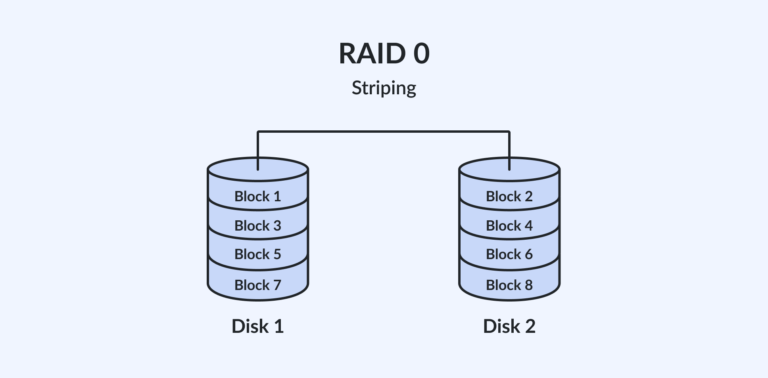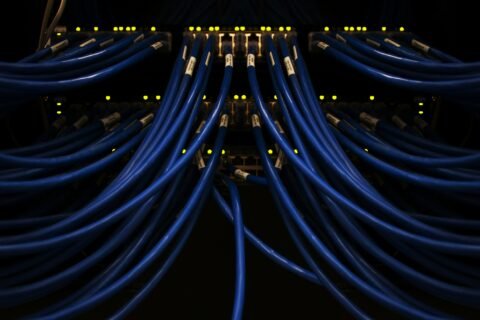Key Takeaways
- RAID 10 combines mirroring and striping for enhanced data protection and performance.
- Ideal for businesses needing high availability and quick data access.
- Understanding the benefits and drawbacks can help make more informed storage infrastructure decisions.
Introduction to RAID 10
RAID 10, also known as RAID 1+0, is a powerful storage configuration that merges the benefits of RAID 1 (mirroring) and RAID 0 (striping). Combining these techniques delivers improved speed and data redundancy, making it a popular choice for enterprises and small businesses alike. But what exactly sets RAID 10 apart from other RAID levels?
This article provides an in-depth look into RAID 10, explaining how it works, its advantages, and the best practices for implementing it. Whether you are a seasoned IT professional or just getting started, this guide aims to offer valuable insights into using RAID 10 effectively. By understanding its components and benefits, businesses can make more informed decisions about their data storage needs, ensuring optimal performance and resilience.
Understanding RAID Levels
Before diving into the specifics of RAID 10, it is essential to understand the basics of RAID (Redundant Array of Independent Disks). RAID levels—such as RAID 0, RAID 1, RAID 5, and RAID 6—offer different combinations of performance, capacity, and data protection. Each level has strengths and weaknesses, and RAID 10 is no exception. For instance, RAID 0 provides excellent performance but no redundancy, while RAID 1 offers redundancy at the cost of disk space.
Understanding these RAID levels helps contextualize RAID 10’s advantages. While some configurations focus purely on speed or redundancy, RAID 10 strikes a balance, making it ideal for environments where performance and data protection are critical. By combining the strengths of RAID 1 and RAID 0, RAID 10 offers unique benefits well-suited to various applications and industries.
How RAID 10 Works
RAID 10 combines mirroring and striping. In simple terms, data is first mirrored and then striped across multiple drives. This architecture protects against data loss and enhances read and write speeds. Specifically, if one disk fails, its mirror on another disk can take over, ensuring no data is lost. A recent Computerworld article explains why RAID 10 is often the go-to configuration for critical applications.
Mirroring ensures that each piece of data is copied onto two or more disks, providing redundancy. Striping, on the other hand, splits data into small chunks and distributes them across multiple disks, allowing for faster read and write operations. The combination of these techniques means RAID 10 can handle multiple disk failures, provided they do not occur in the same mirrored pair. This makes RAID 10 highly reliable and efficient, catering to environments that cannot afford downtime or data loss.
Pros and Cons of RAID 10
- Pros:
- High performance: Combines the speed of RAID 0 with the redundancy of RAID 1, allowing for quick read and write operations. This makes it particularly beneficial for applications requiring high I/O performance, such as database servers and virtual environments.
- Data protection: Multiple disk failures can occur without data loss as long as no mirror pairs are lost. This offers a significant advantage over other RAID levels, which may not offer the same level of fault tolerance.
- Quick recovery: Failed disks can be replaced and rebuilt quickly due to the mirrored structure. Data can be restored promptly, reducing downtime and ensuring business continuity.
- Cons:
- Cost: Requires twice as many disks, making it more expensive than other RAID configurations. Companies must weigh the benefits of increased performance and protection against higher investment costs.
- Capacity: Only half of the total disk capacity is usable due to mirroring, meaning that two terabytes of disk space are required for every terabyte of data storage. This may not be the most efficient use of resources for businesses with limited budgets.
- Complexity: Setting up and managing simpler RAID levels can be more complicated. Organizations may need to invest in specialized skills or training to ensure that RAID 10 is implemented and maintained effectively.
Implementing RAID 10: Best Practices
When integrating RAID 10 into your storage strategy, consider best practices to maximize its benefits. Firstly, use high-quality and reliable disks to minimize failures. Regularly monitor the health of your RAID array and have a robust backup plan in place. Also, think about the specific needs of your applications. For example, databases and virtual machines often benefit significantly from RAID 10’s speed and redundancy.
Implementing RAID 10 also involves choosing the right hardware and software. Ensure that your RAID controllers are compatible and capable of handling RAID 10. Additionally, regular maintenance and monitoring are crucial. By proactively identifying and replacing failing disks, businesses can avoid unexpected downtimes and maintain optimal performance.
Real-World Applications of RAID 10
RAID 10 is particularly well-suited for environments where both high performance and fault tolerance are essential. This includes database servers, email servers, and heavily used file servers. For example, in a high-traffic e-commerce platform, RAID 10 can ensure customer data remains accessible even if a disk fails. It also supports speedy transactions, contributing to a positive user experience.
Beyond e-commerce, RAID 10 is frequently used in finance, healthcare, and telecommunications sectors. In these industries, data integrity and accessibility are paramount. RAID 10’s ability to provide rapid data access while safeguarding against hardware failures makes it an excellent choice for critical applications, ensuring businesses can operate smoothly and efficiently.
Conclusion: Weighing Your Options
Deciding to use RAID 10 involves balancing the needs for performance, data protection, and cost. While it offers numerous advantages, the higher cost and reduced usable capacity are factors to consider. By understanding these elements, you can decide whether RAID 10 is the best fit for your business’s data storage requirements.
In summary, RAID 10 provides an excellent blend of speed and reliability. It is particularly valuable for applications where downtime is not an option, and data loss would be catastrophic. However, the increased costs and complexity require careful consideration. Businesses must evaluate their needs, budget, and resource availability to determine if RAID 10 aligns with their data storage strategy.

Daniel J. Morgan is the founder of Invidiata Magazine, a premier publication showcasing luxury living, arts, and culture. With a passion for excellence, Daniel has established the magazine as a beacon of sophistication and refinement, captivating discerning audiences worldwide.





